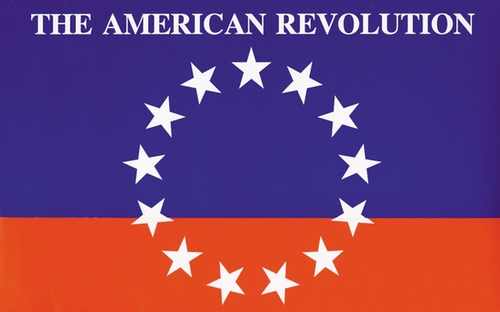
The American Revolution
In 1773 a group of American colonists dressed as Mohican Indians boarded the ships of the East India Company in Boston harbor and threw 342 chests of tea over the side. The "Boston Tea Party" was only one of the incidents, which reflected the colonists' dissatisfaction with British rule, but it led directly to the closing of the port of Boston, the drafting of a declaration of rights and grievances, and the outbreak of the American Revolution. This primary source portfolio recreates those years of struggle until Britain acknowledged the independence of America in 1783. A letter from George Washington to the American Governor Clinton, and pages from a young British officer's journal which recall the terrors of the icy winter of 1779, are among the exhibits. Also included is a facsimile of one of the most famous documents in the world; the Declaration of Independence. The original draft, which carries notes and amendments made by Jefferson, Franklin and their colleagues can be used for a side-by-side comparison. A royal proclamation from King George III, a propaganda handbill, military orders, contemporary battle plans, and cartoons all highlight the revolutionary war. This portfolio includes a Study Guide with reproducible student activities. 5 Illustrated Broadsheet Essays: * Tea, Tax, and Trouble * Gentleman Johnny * The Old Fox * The World Turned Upside Down * The Big Country 18 Primary Source Documents: * A letter from a colonist to East India Company in London about the Boston Tea Party * Plan of Boston and Bunker Hill, the scene of one of the first battles in the war * Proclamation by George III ordering his subjects to fast * Original draft of the Declaration of Independence with notes and amendments * Declaration of Independence, drawn by Congress in 1776 * Resolve of Congress giving Washington power to raise forces and make people accept American paper money * Lieutenant Digby's Journal, pages from a young officer who served with General "Gentleman Johnny" Burgoyne * File copy of a letter from General Heath to General Burgoyne about the behavior of British soldiers in captivity * Letter from General George Washington to Governor Clinton * An issue of the South Carolina Gazette, published in 1783 * A commission posting Benjamin Hopkins as an officer to a regiment commanded by Seth Warner * Early American paper money * A lottery ticket printed to help raise money for carrying on the war * American handbill to persuade British soldiers to desert * Order of Battle, diagrams drawn by George Washington for battle formations in December 1777 * Captain Cooley's note authorizing provisions for scouts * Reconnaissance order giving instructions for a mission * General George Washington taking the salute at Trenton








